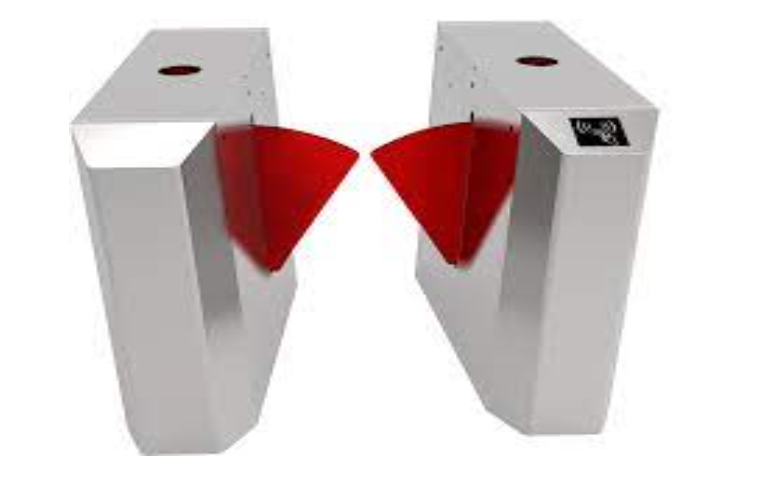Flap barriers have truly become part of the new-age access control systems, bringing them together with a similar balance of security, convenience, and style. Whether you have to manage entry at a corporate office, a shopping mall, or a transit hub, suitable flap barriers are sure to maximize smooth operations with better security.
In the following guide, we will outline the critical factors from KTI Automation Pvt Ltd that will help you choose the best flap barrier for your requirements.
-
Security Requirements
Evaluate the security requirements for a purchase, taking into consideration the level of access control that may be needed, potential threats, and what type of premises are being secured. For example:
- High-security areas, like data centres or research labs, may need sophisticated biometric integration.
- Corporate offices may be satisfied with RFID or card-based systems for moderate security zones.
Consider flap barriers that will support your level of security as the priority.
-
Traffic Volume and Flow
Flap barriers are efficient in regulating pedestrian movement, but the choice of a model depends on expected traffic. For high-traffic areas like metro stations or stadiums, choose flap barriers that open and close at a higher speed to avoid congestion. For moderate traffic, standard-speed barriers may be adequate.
Determine whether single or multiple lanes need to be accommodated by your traffic flow.
-
Compatibility with Access Systems
Flap barriers can integrate with numerous access control systems, such as:
- RFID card readers
- Biometric scanners (fingerprint, facial recognition)
- QR code or barcode scanners
- Ticketing systems
Make sure the flap barriers you choose fit into your existing or planned access control infrastructure. Compatibility ensures seamless operation and does not generate added costs for system upgrades.
-
Space and Installation Limitations
You should measure available space in the facility to choose the appropriate models and sizes. Compact models fit well in very narrow or tight spaces. Higher foot traffic through larger facilities requires dual-lane or wide-lane models to make access to the flaps more convenient.
Choose models of flap barriers that are easy to assemble and install to minimize downtimes in service.
-
Material and Construction Quality
Materials used determine how long your flap barrier will be in use. Stainless steel is common because of:
- Resistance to rust
- Durability under heavy use
- Gleaming, commercial look
For installations outside, the flap bar should be designed to withstand external weathering factors.
-
Safety Features
Safety is one of the paramount aspects when it comes to the selection of a flap barrier. Consider models with:
- Anti-pinch sensors: These prevent accidental injuries by detecting obstructions.
- Obstacle detection: Automatically retract flaps in case an object is detected in the pathway.
- Emergency override: Free passage is allowed during power failures or emergencies.
These features not only make the users safe but also prove your dedication to creating a safe environment.
-
Design and Customization
Flap barriers should enhance your facility’s look and feel but should also serve their purpose. Most models have:
- Customizable flap colors
- LED indicators to help guide people in
- Branding options for a professional finish
Select a design that flows with your facility’s architecture and branding but maintains a professional finish.
-
Budget and Long-Term Costs
While the first cost is high, the other factors, such as maintainability, energy consumption, and accessibility of spare parts, are also considered as the cost of ownership.
Quality flap barriers may cost like an arm and a leg to purchase, but in the long run, they will not require frequent repairs and, hence, will be economical. Furthermore, learn more about the warranty and post-purchase services from the manufacturer in order to have a long-term option.
Applications of Flap Barriers
Flap barriers are flexible and can be applied in various settings, such as corporate offices, educational institutions, transportation hubs, and retail spaces, for securing employee and visitor access, monitoring student and staff movement, regulating passenger flow efficiently, preventing overcrowding, and validating entries.
Maintenance Tips for Flap Barriers
To ensure your flap barriers stay in the best performance possible over time, follow these maintenance practices:
- Regular Cleaning: Ensure that sensors and mechanisms are dust and debris-free.
- System Diagnostics: Periodically test the system for any software or hardware malfunction.
- Professional Servicing: Schedule routine checks by certified technicians to ensure the functionality of the flap barriers
- Firmware Updates: Access control software is kept updated for better functionality and security.
About KTI Automation Pvt Ltd
KTI’s founders initiated KT Automation Pvt Ltd. after gaining 26 years of significant experience in this field. The Government of India’s Department for Promotion of Industry and Internal Trade has declared the company an Innovative Startup within its initial quarter. While we appreciate the recognition of our efforts, we will continue striving to find innovations in the aspects of automation, security, and safety. We offer the best flap barriers and are known for our quality.


